
Chroma Distance, an exhibition by 12 emerging artists, will be on view from January 20, 2023 through February 5, 2023.
The exhibition will be held at the POLA MUSEUM ANNEX (Ginza, Chuo-ku, Tokyo) in collaboration with POLA ORBIS HOLDINGS INC. and TRiCERA Co.
Chroma Distance
The exhibiting artists and the works on display differ from each other in terms of medium, scale, and concept, but at the same time interact within a single community. The works exhibit a wide range of conceptual concerns, from intimate depictions of identity, to disintegration and creation, to the intersection of eras, to a growing sense of urgency to overcome tragic events of the past. Through both abstract and figurative techniques, the artists explore a sense of space and examine form and texture as the basis of the form.
The exhibition will feature approximately 40 works in total, including new works by 12 artists.
Event Summary
Chroma Distance
Dates: January 20, 2023 (Fri) - February 5, 2022 (Sun) *Open throughout the exhibition period
Opening hours: 11:00 - 19:00 (Admission until 18:30)
Admission free
Venue: POLA MUSEUM ANNEX
POLA GINZA Bldg. 3F, 1-7-7 Ginza, Chuo-ku, Tokyo 104-0061)
Access: 6-minute walk from Tokyo Metro Ginza 1-chome Station (Exit 7) / Tokyo Metro Ginza Station (Exit A9)
Organizer: POLA ORBIS HOLDINGS INC.
Cooperation: TRiCERA Co.
Participating Artists
1. Yuka Numata
Where does our "real" exist in today's increasingly digitalized world?
One of the places where we experience reality in our daily lives is the supermarket.
Supermarkets are the places where we can find all the groceries we need in our daily lives.
This package series is one of a series of works created on the theme of a fictional supermarket, and is characterized by the use of image editing software such as Photoshop to create bugs and misalignments in the images of product packages.
By re-installing in the real world situations that could only happen on a computer, constructed using analog methods, we can search for our own "realness.
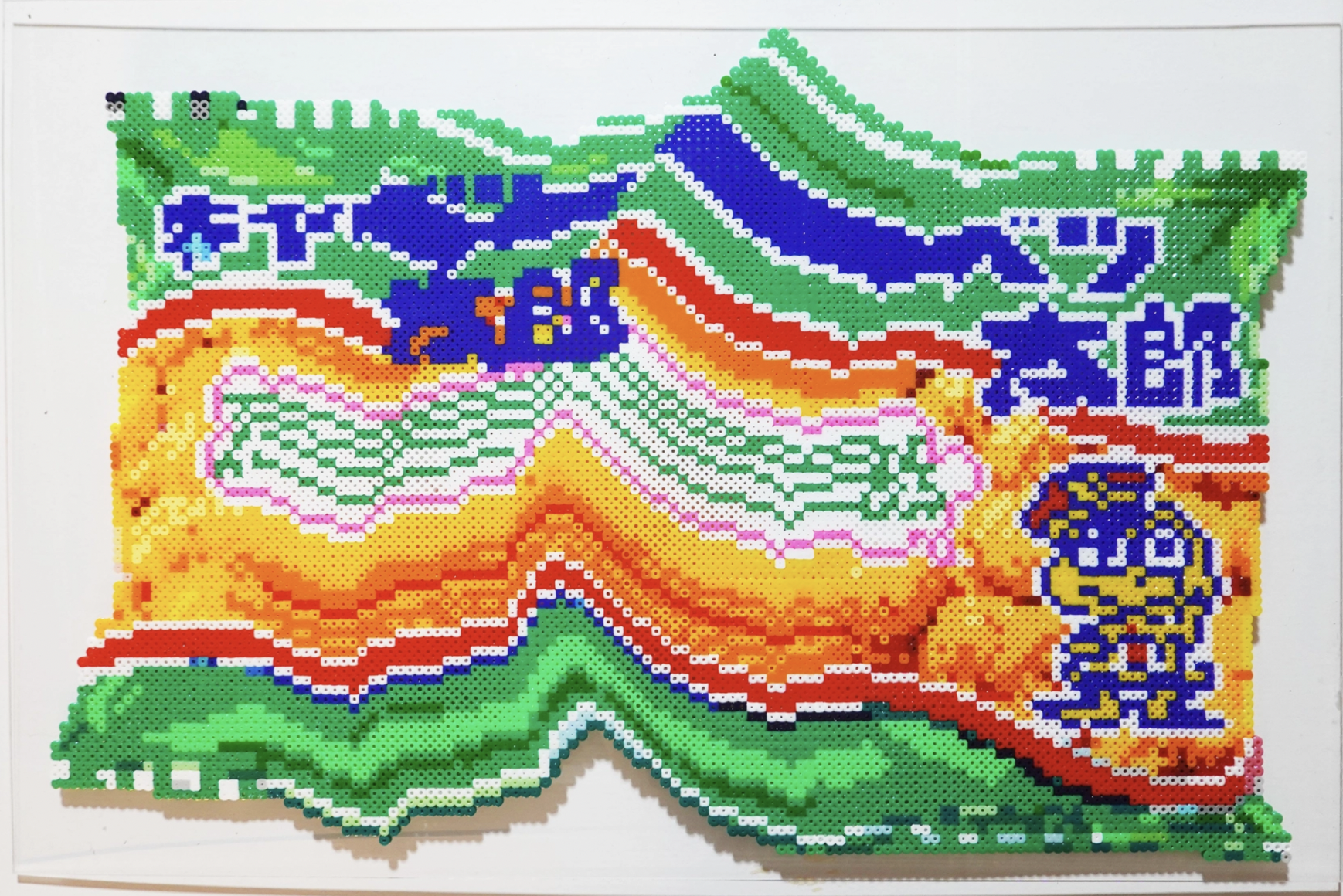
Taro Cabbage, 2022, plastic beads on acrylic panel, H465 × W700 × D10mm
2. saki matsumura
When we combine multiple techniques and colors in a painting, they clash and distort each other. When we discover these unexpected effects, we rediscover what kind of sensations we usually have, and our imagination for new sensations also expands.
We believe that the imagination of the unseen will continue to change the way we look at and relate to the world around us.

FORM-vortex 4, 2022, acrylic paint, wood panel, cotton cloth H1621 × W1303 × D50mm
3. u-ku
We unconsciously experience "involuntariness and decisions" over and over again. When U-ku emigrated abroad as a child, he experienced both the loneliness caused by cultural and language differences and the emotional loneliness he suffered as a "returnee" after returning home. The same feeling that he experienced many times afterwards both occurred under the condition of being in a group.
Philosopher Kiyoshi Miki also said, "Loneliness is not in the mountains, but in the city. Loneliness is not in the mountains, but in the city, and it is not in one person, but in the "space" between many people. However, I thought that this solitude could also be a catalyst for new development through the exchange of "involuntariness and determination" that comes only in times of solitude. U-ku compares the involuntary blotches and shapes created by the colors of watercolors he has selected himself with his own memories, and finally adds motifs to them. When a third party views these works, they are newly connected to various memories, and the background of the work grows as the number of viewers increases. However, there is always only a one-on-one dialogue, and the viewer is confronted with all kinds of "loneliness" in a quasi-realistic way.
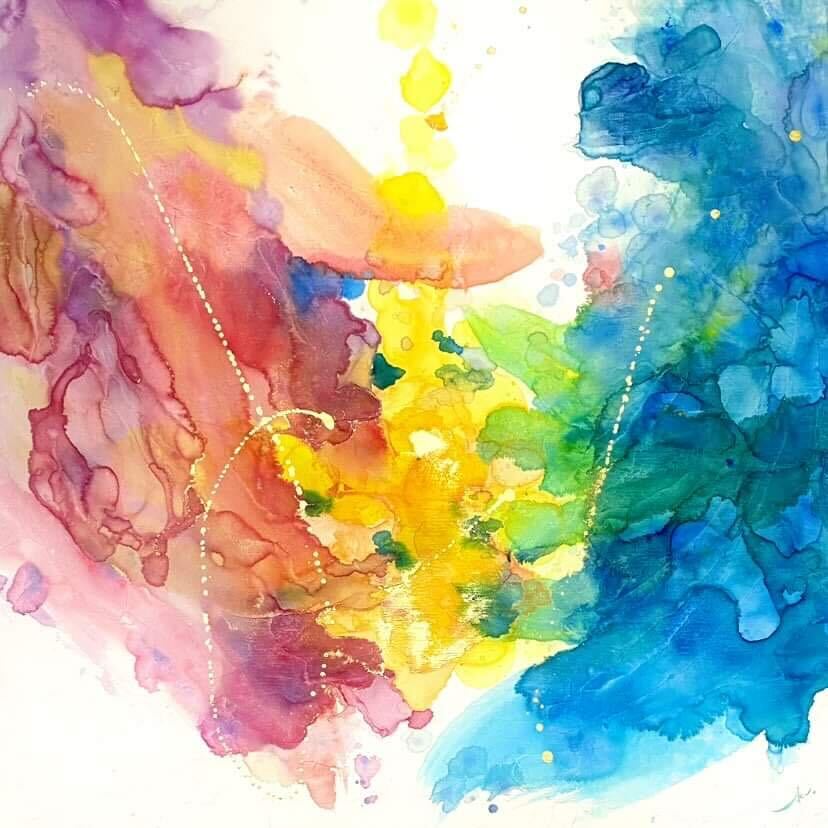
Birth, 2022, watercolors, pigments, gold leaf, water-based gesso, wood panel, h727 x w727 mm
Keiko Aikawa
It seems that there is a face within a face. The person we face also has a face that we do not know. We can never fully understand or comprehend another person. How can we see the person himself/herself?
In this work, I painted as if I were searching for a face within a single face.
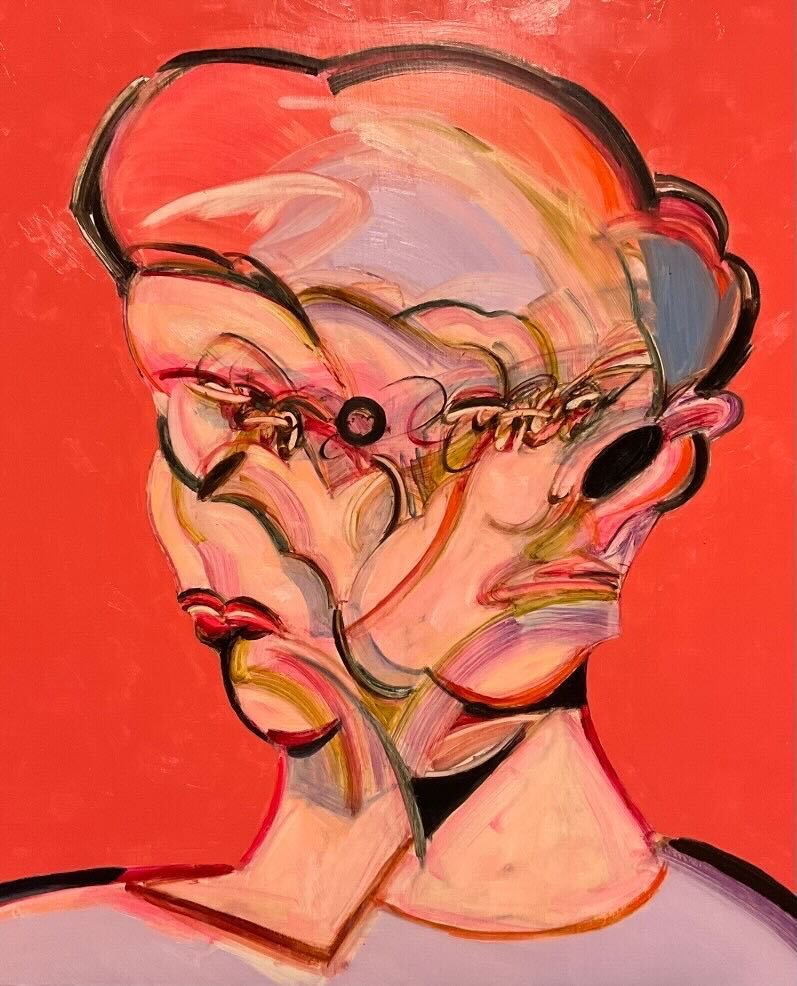
I Try Not to Think as Much as Possible, 2022, oil on canvas, h530 x w652 x d200mm
5. omura yukino
The nightscape painted on a black panel with multicolored stickers looks like a photograph when viewed from a distance, but when one gets closer, one realizes that it is painted with stickers made of stationery. By depicting a nightscape that symbolizes the city with inexpensive materials, the artist expresses the contradiction of monetary values and the discomfort of mass consumption society.

Can't Help Falling In Love, 2022, acrylic paint, panel, sticker h727×w500mm
6. chihirobo
Under the theme of "reamlike reality," Chihirobo uses photographs he has taken himself to condense what he is seeing and where he is seeing it into a work of art. How much excitement can we find in the scenery in front of us? I want to convey how fun and happy the excitement of "the joy of discovery" is.
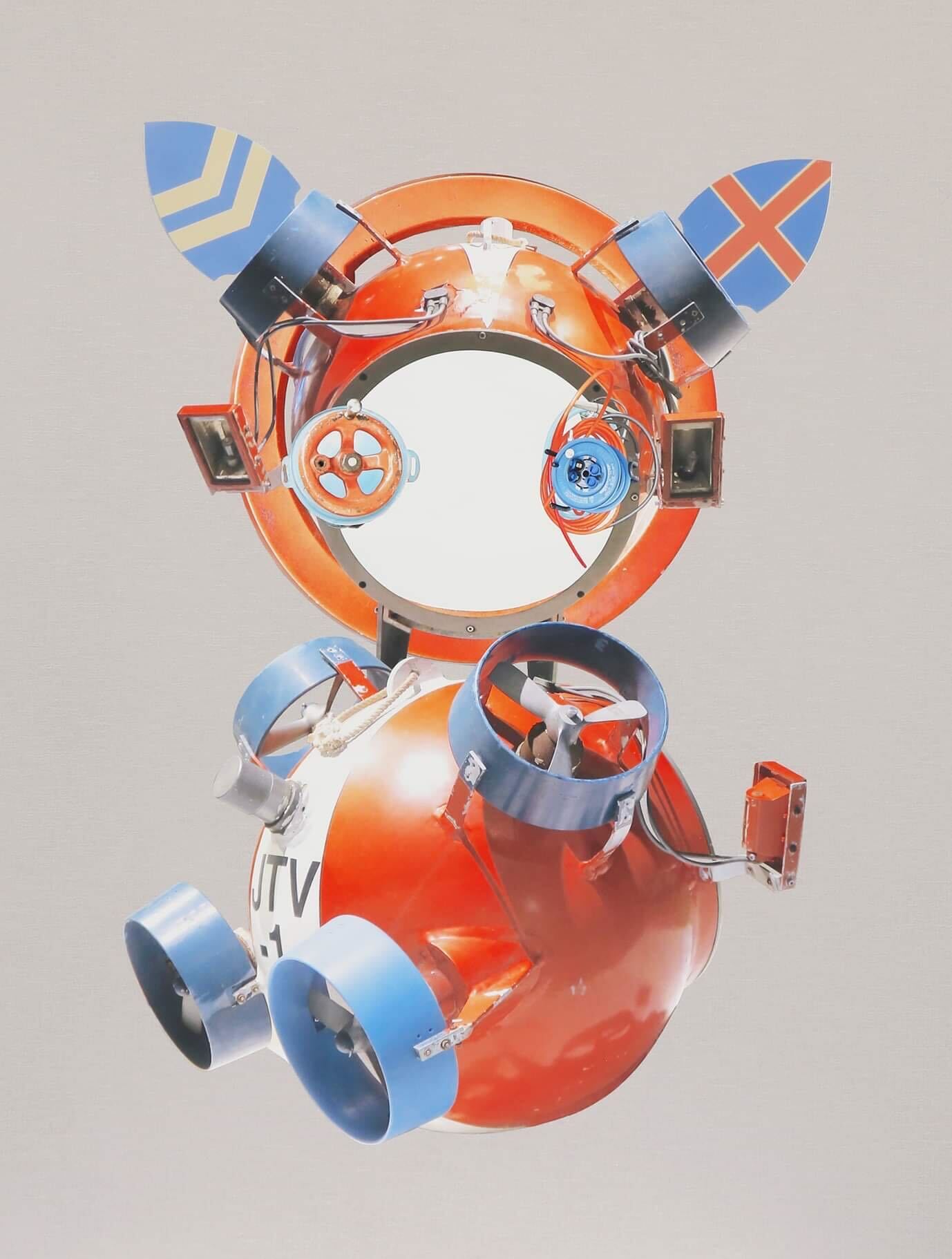
《chihi-robo》 2022 acrylic paint, photograph h727×w606mm
7. yurika horikawa
occhan" is a motif that represents "people" (unisex) activities. I also consider the historical background of borders and stripes, and feel that it is people who create and change them. The backgrounds of my works include negative elements and those stemming from social problems, but I sublimate them and continue to transmit as art the brightness and joy that people can glimpse. I always embody what interests me, what is lost to me, and what can turn around the negative feelings that are inherent in me.
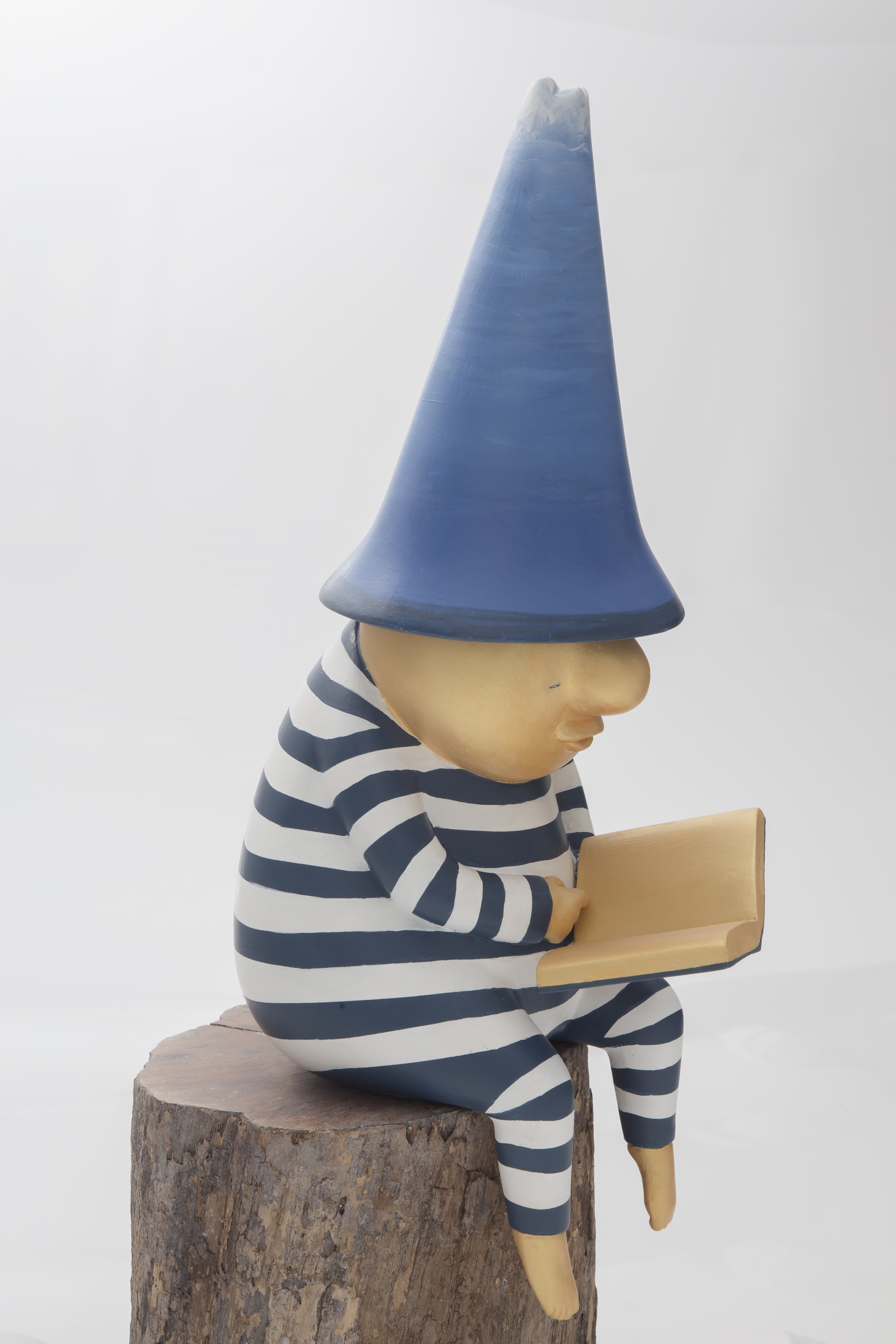
《readman》 2018 acrylic paint, resin h390×w160×d210mm
8. Maoka Ueda
Wonky (wobbly and unstable) Tunes (melody) is a concept that I have been consistently working on for the past several years, in which parts of a distorted character follow the seemingly irregular yet regular curvature of nature and are integrated into a melodic whole and reconstructed anew. This is a concept that I have been consistently working on since the past. The cartoon characters are a representation of the laws of nature that are regular and beautiful when observed closely, and the radial spread of the characters changes their expressions when viewed from a closer or closer angle, or depending on the orientation of the canvas.
Just as a single object can be viewed in various ways depending on multiple interpretations, the characters in the paintings also create various expressions depending on how they are perceived.
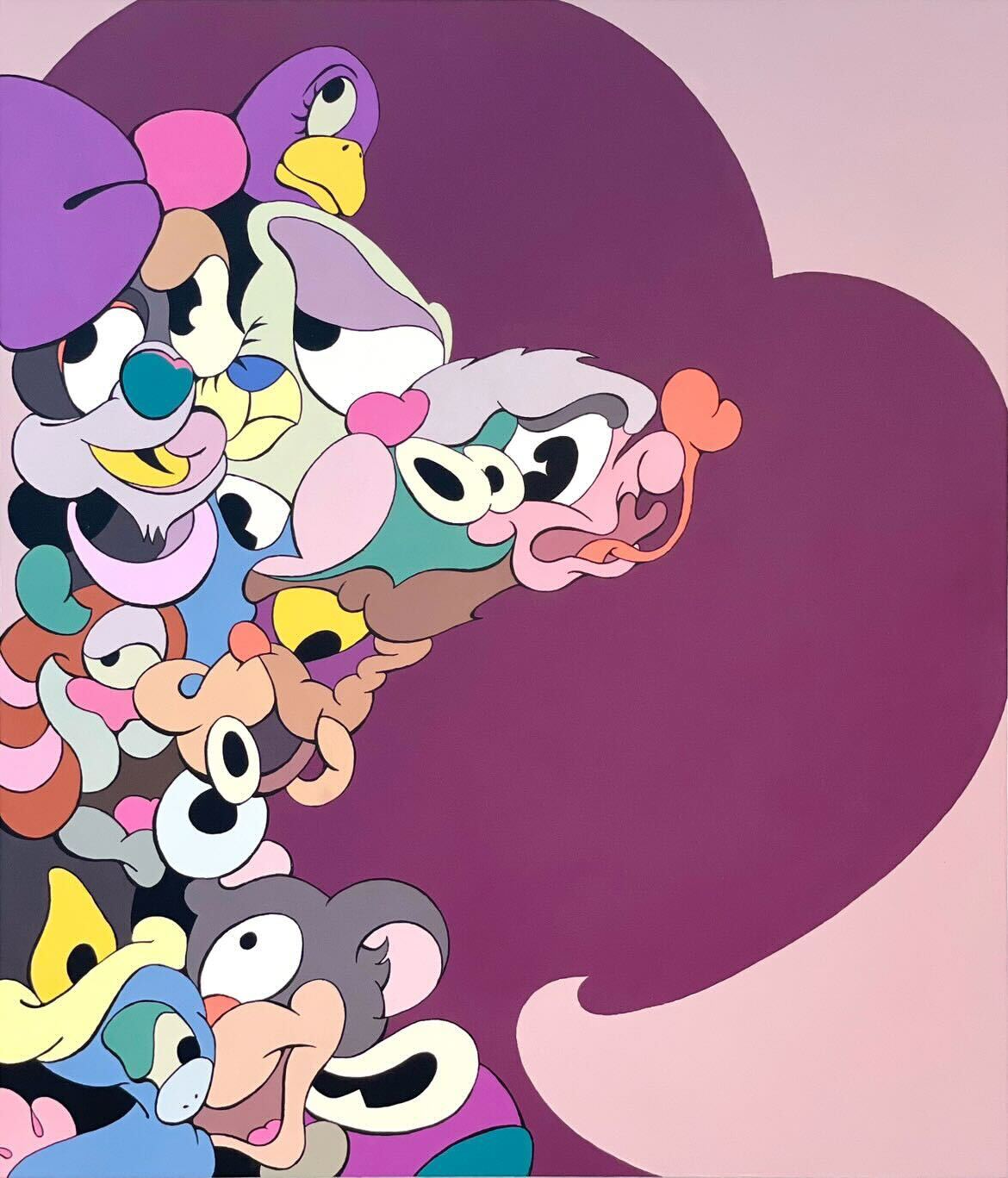
Angela, 2022, acrylic paint on gesso panel, h455 x w530 mm
9. ayaka Nakamura
Ayaka Nakamura depicts the air and emotions felt from the landscape, and her improvisational accumulation of lines and materials represents the movement and sounds of life, and emotions that have yet to be born as words. Each of us is a tiny being, but many lives come together to make this big universe. Even if we are not directly involved, the present moment is created by the lives that exist in this world, and I feel that I am a part of it. Every scene is a momentary miracle woven by the interplay of life, and no two are ever the same. The scenery we see changes depending on our emotions and the height of our eyes at the time. Looking at a landscape may mean looking at yourself. To paint a landscape may be to paint you and to paint yourself. Looking at a landscape and looking at a painting are somewhat similar. I hope that when you look at my work, it will connect to some part of you.
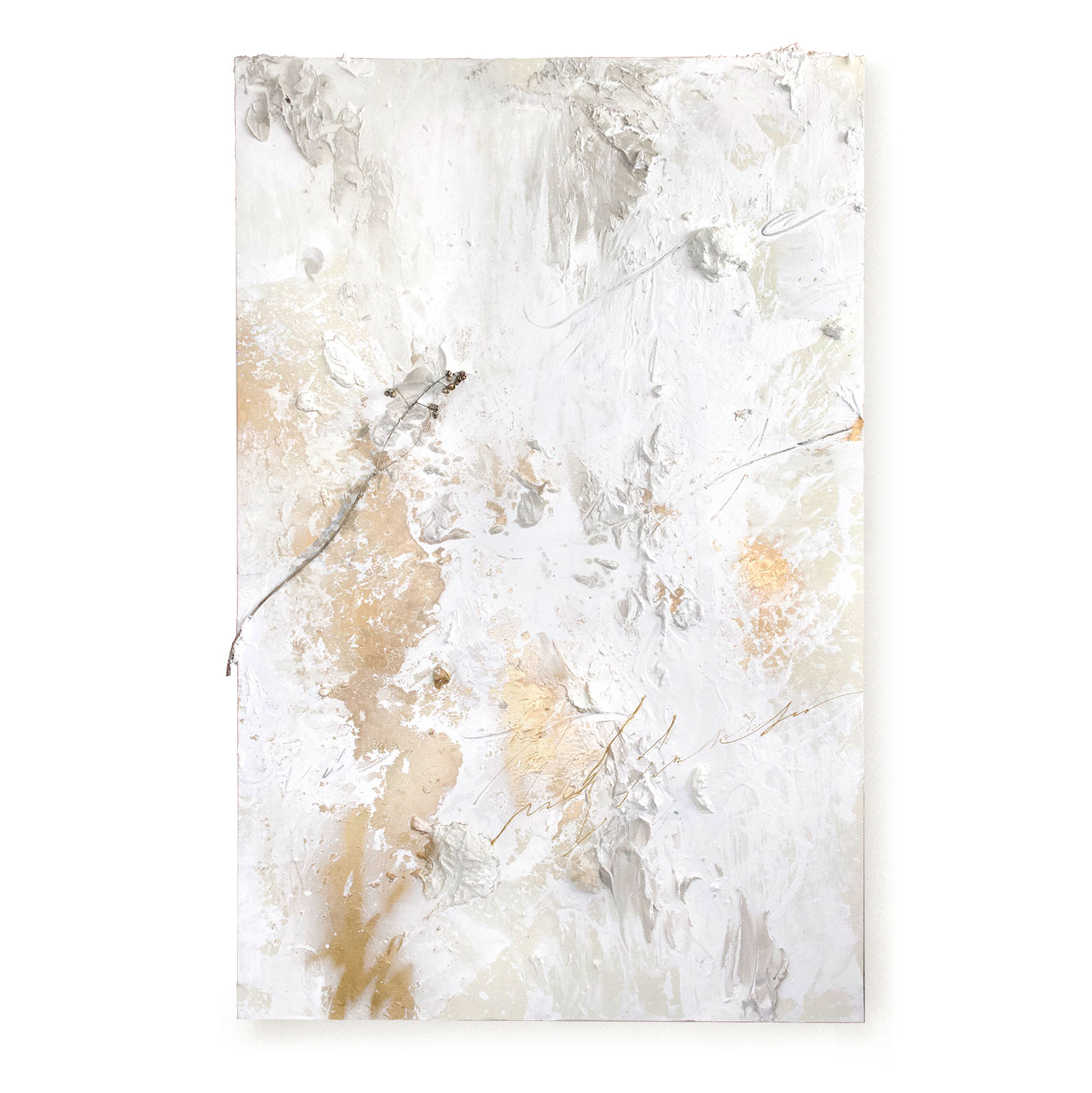
finding some kind of peace ##, 2022, acrylic paint and plating pigment on canvas, h1920 x w1050 mm
10. aoi kei
My art is made up of two main inspirations. One is that I became a mother and had a chance to think about my ancestors, and I was impressed by the chain of life, the momentary brilliance of life in contrast to its long history, and the fact that I am in the midst of this flow. The second is that I was overwhelmed by the realism of the creation (everything in the world, including space-time and physics), which is the result of my full commitment to realism and painting. The other theme is to look into the real through painting, to know the connection between the real and the human, and to put "something good" into the canvas. I think that sounds and tastes are easy to understand, but I would like to know what is this common human perception of "pleasant sounds," "unpleasant sounds," "tastes good," "tastes bad," etc., despite the differences among individuals.
People tend to say that art is free and art is a matter of taste, but I believe that "something good" can also be found in the visual sense, and that there is an "answer" to the question of beauty. I want to search for it and put "beauty" on canvas. Seeing the invisible sometimes frees me from common sense and assumptions, which I personally enjoy, and that is now the purpose of realism.
Most of my paintings are so personal that it is difficult to let go of them, and I paint them when I am moved.
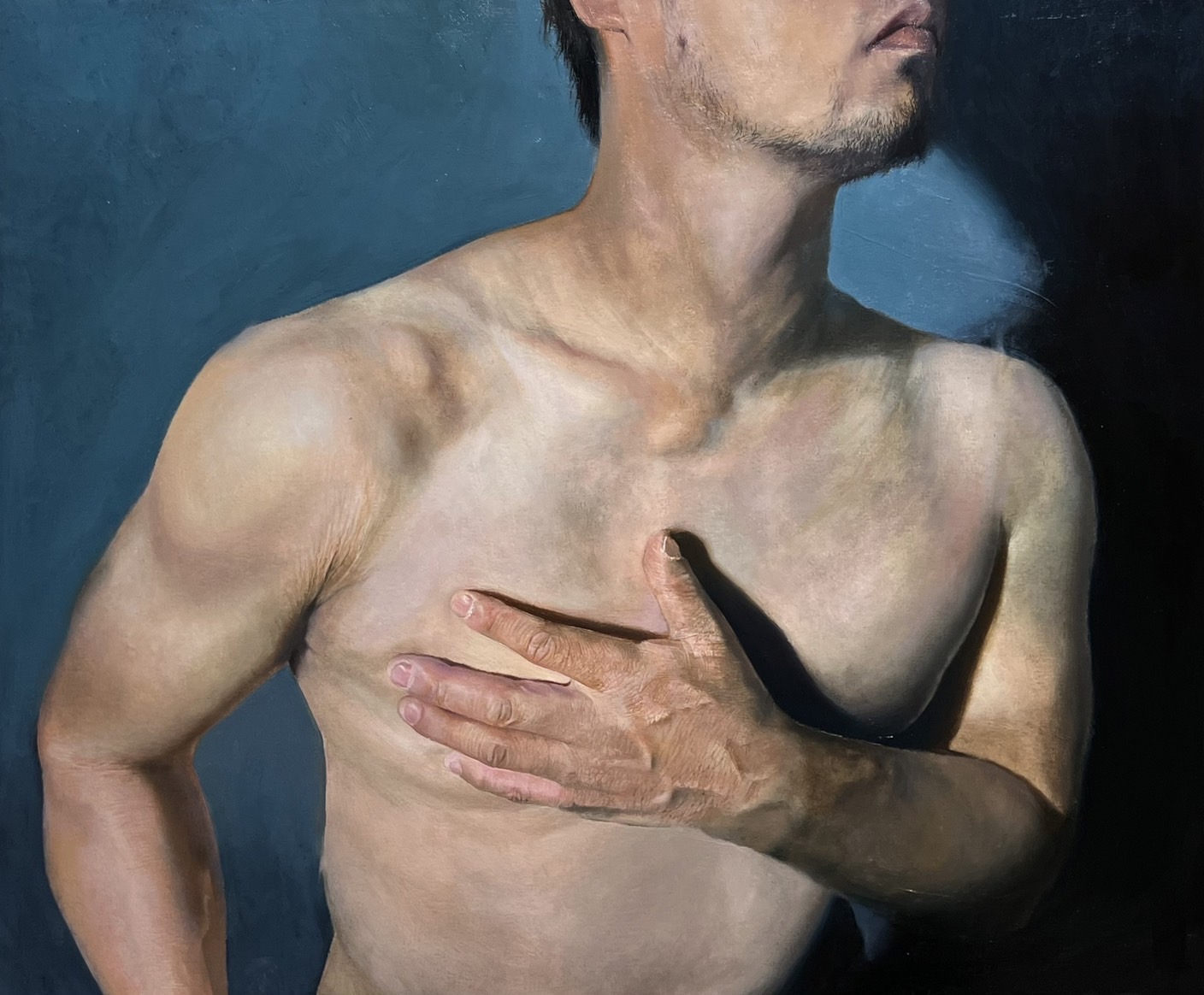
Breath, 2020-2022, oil on canvas, h5000 x w606 x d200mm
11. eternity takaya
My interest in the phases of pictorial space has developed in conjunction with a metaphysical inquiry into the question, "What is existence? In the pictorial space, the individuality and form of something when it "exists" are not shown, but the subjective nature that the object or natural phenomenon has generated in the mind through its action on the sensory organs is manifested in multiple senses. Transforming the traces of perception into spatial phases is the experience of the work I create.
The space created in this way is multidimensional, both from a semiotic and a perspective point of view. There are no divisions between past, present, and future.
The artist creates a phenomenal pictorial space by fusing irregular forms made from pigments with colored surfaces.
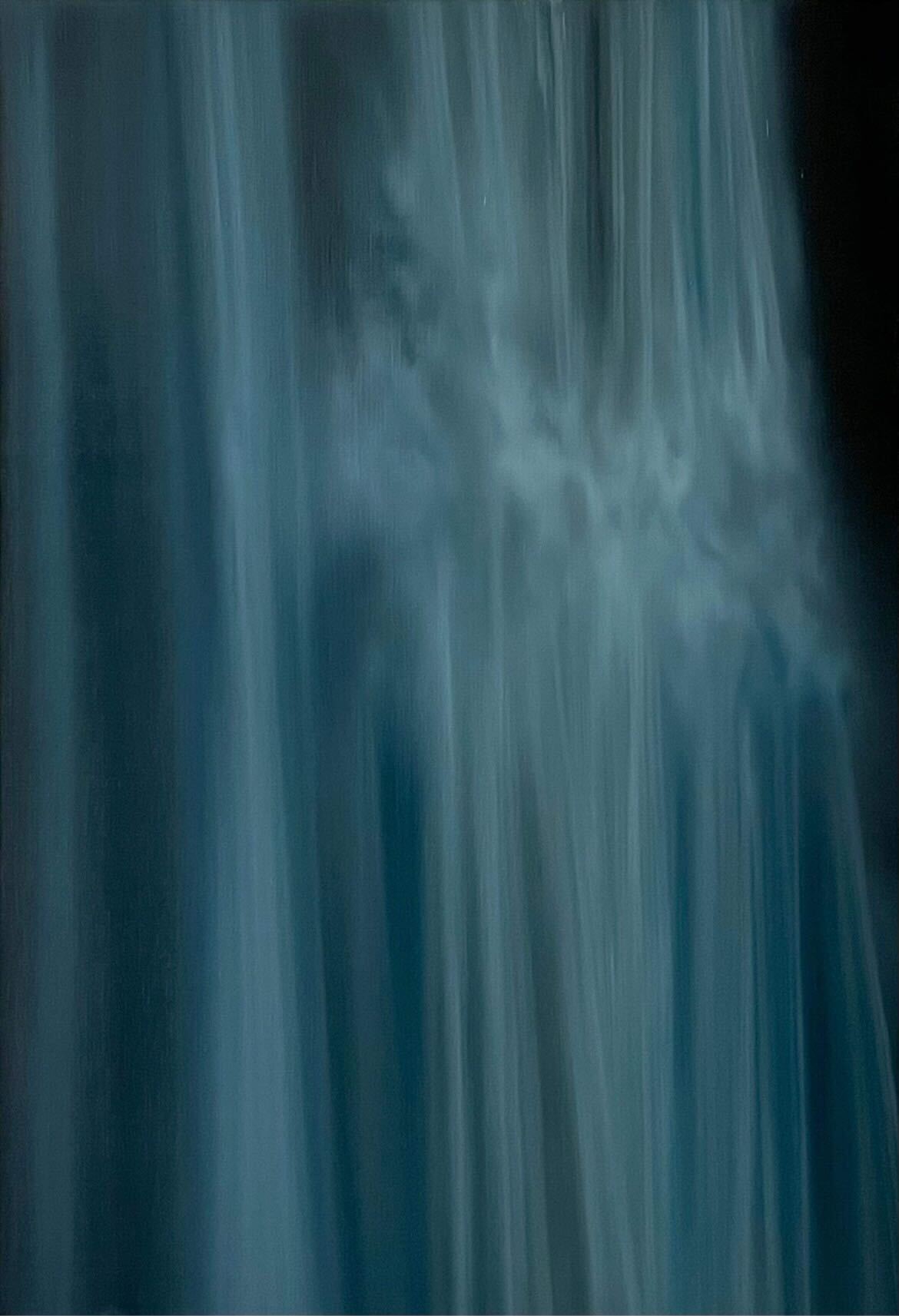
Relativity, 2022, pigment and oil on linen canvas h727 x w500 x d20mm
12. rain star
Using acrylic paint and pen, she mainly exhibits paintings with fine line drawings of motifs such as a girl whose face has been disfigured, based on the keywords of "collapse" and "generation.
He has also created numerous paintings for book covers and CD jackets.
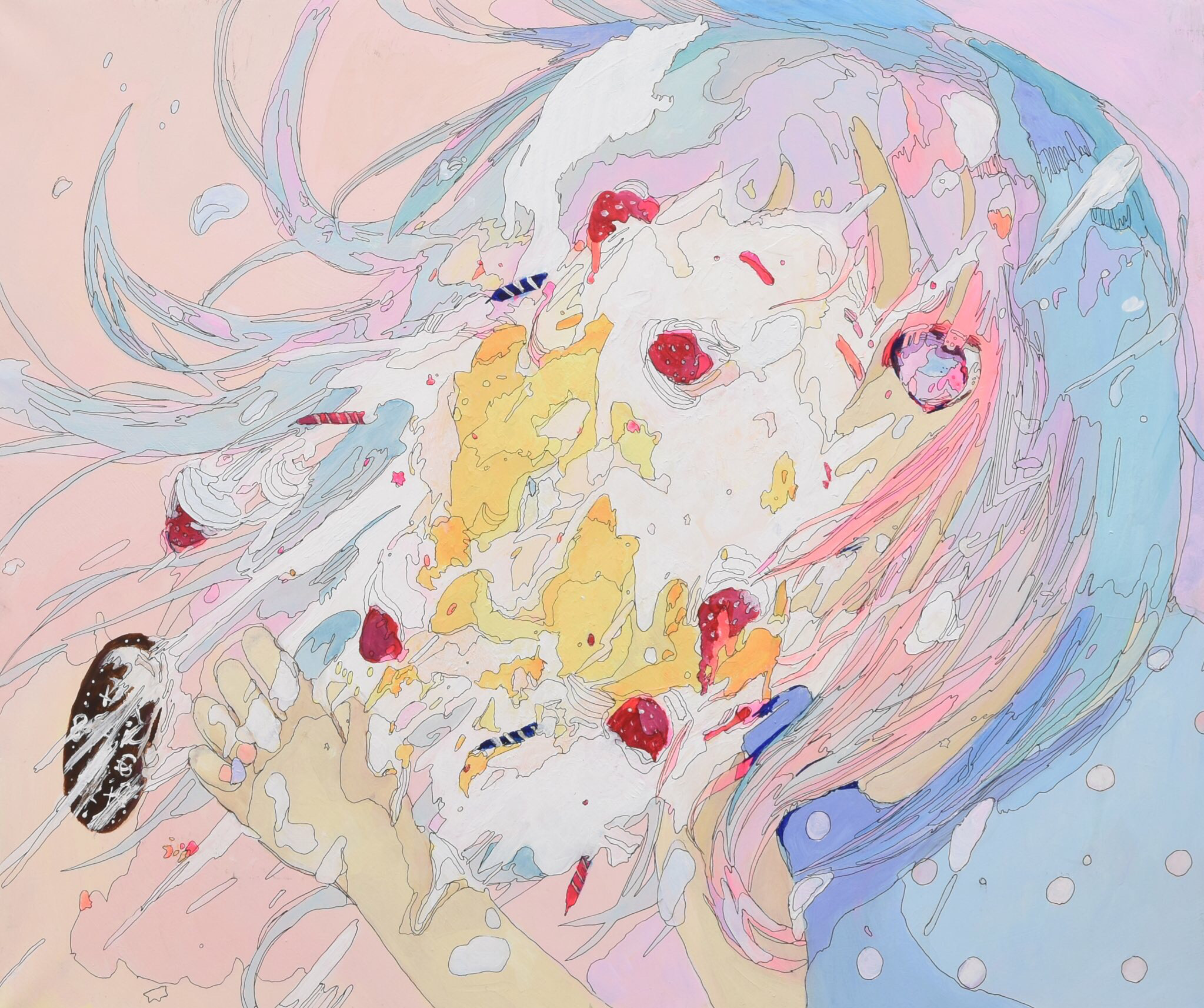
Untitled, 2023, acrylic paint and pen on cotton canvas h606 x w727 x d30mm